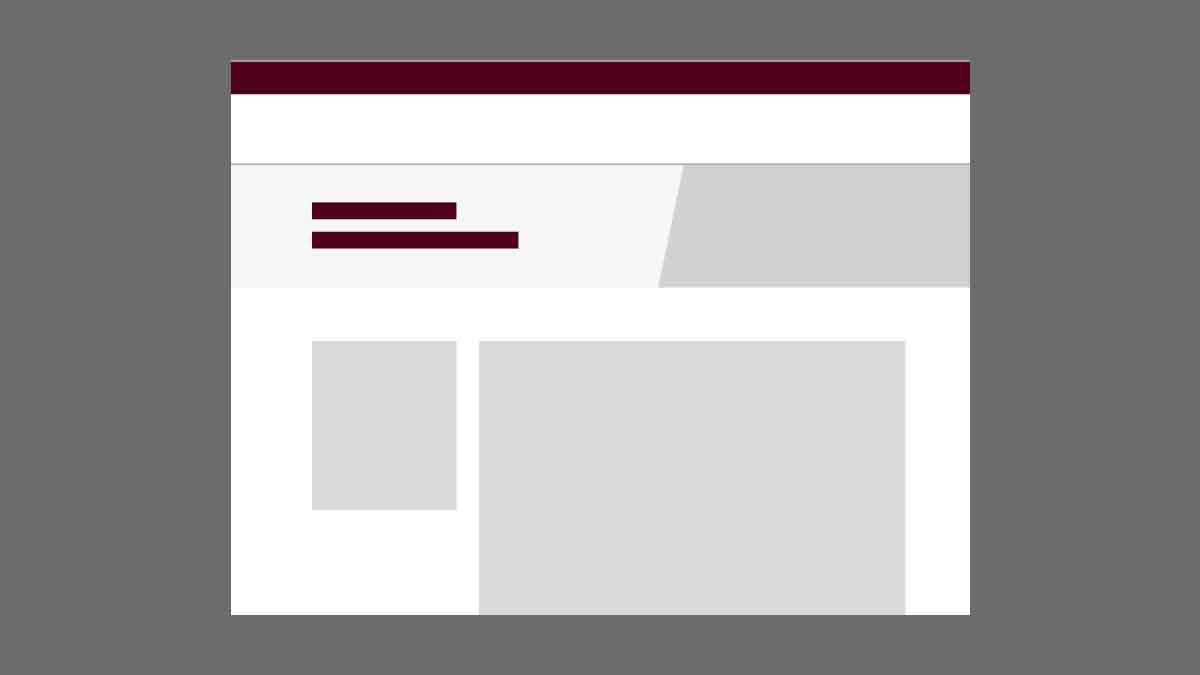Tips for Homepages
Your homepage is the front-most facing page of your website. It is important to put your best foot forward on your homepage.

Types of Homepages
Website Homepages
The homepage of your website is the first thing people see when they visit your site by going to your URL or website address (i.e., marcomm.tamu.edu). However, this isn’t where all people will enter your website; a large portion of your visitors will enter on other pages in your site that come up in search results.
Microsite Homepages
Sometimes websites contain microsites that have their own homepages. For example, a college website that houses department web content may set up their site so that each department has their own navigation and homepage, making the department’s section of the website a “microsite” on the college’s website.
Content Strategy for Homepages
Hit the highlights
Some people may come to your website and only ever see the homepage, so you want to make sure every piece of content counts.
You can think of your homepage as similar to a brochure. Ideally, it will be rich with imagery and short, impactful copy that gives an overview of what your website is about.
Write teasers of important content
Every piece of content on the homepage should have a call to action (CTA) that leads to more information or a desired action (i.e., “Apply Now”). We call these “teasers” — small pieces of content with at least a heading, description and links. These are often displayed using various types of card groups. A teaser should have enough information to make it clear to a reader whether or not the information they seek may be on that page.
In general, it’s a good idea to link off to every major section of your website on the homepage. However, you shouldn’t limit yourself to linking to these landing pages. Sometimes the most popular content on a website is a specific standard page with important content. When deciding what pages to link to on your homepage, be sure to include both the pages that are most important to your goals and the pages that are most relevant to your audience.
Write to make your content easy to read
When writing for the web, it’s important to help website visitors know what they want to read — and what they don’t.
- Group like content together: Use components to visually and semantically group related content.
- Use helpful headings: Break up content with helpful headings that clearly indicate what type of content is beneath them.
- Write descriptive link text: It should be clear where a reader will go if they click on the linked words without having to read anything else.
- Keep it short: Write using short words, sentences and paragraphs. Get to the point as quickly as possible.
Components to Consider
These Aggie UX components are some of the most used on landing pages. Use these components as a starting point for designing your page layout using the content you have written.
- Homepage Header
This header style is intended to only be used on website or microsite homepages. It features a larger background image than landing page headers and more CTA options.
- Standard Page Header
This header style can be used on any page and is very flexible. This can be more appropriate for homepages for websites that don’t have a lot of high-quality imagery available.
- Media Feature
A media feature focuses on media — an image or video — as the focal point. It requires a heading and description, and can have a CTA, displayed as a link or a button.
- CTA Feature
A CTA feature is a large, succinct typographical feature with a CTA button and a prominent background image. You can add a brief description.
- Cards & Card Groups
A card group is a collection of modular cards with an optional section intro. Cards have a variety of media and CTA options and are a great way to give previews or teasers of content on different pages.
- Callout
A callout highlights one piece of content with one or two links displayed as a linked heading, button(s) or link(s).
- Collection Feature
A collection feature has a heading and small description area next to a larger “collection” area where one of the following options is displayed: icon list, link list, description list or factoids (default or inline layout).
- Split Feature
A split feature contains two or three cards over a background image. The cards can either be featured cards or linked cards.
Tips for Other Page Types
Most pages in a website can be considered standard pages. These are the pages that house detailed content on your site and can either have no sidebar, a sidebar menu or on-page navigation.
A website can contain multiple landing pages. Typically, your primary landing pages are linked to in your site navigation. However, large sites may have more landing pages than just these. Landing pages serve as a table of contents for sections of your website and are often rich in imagery.

